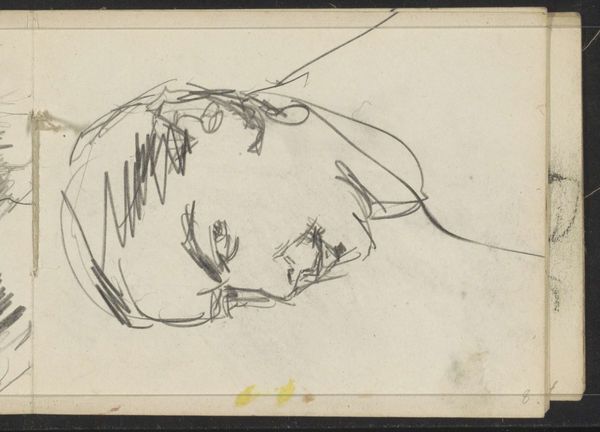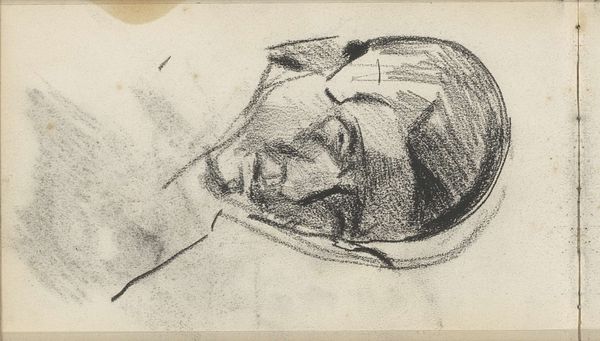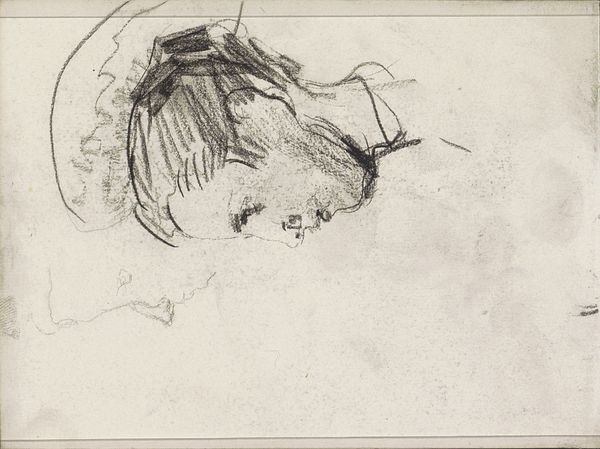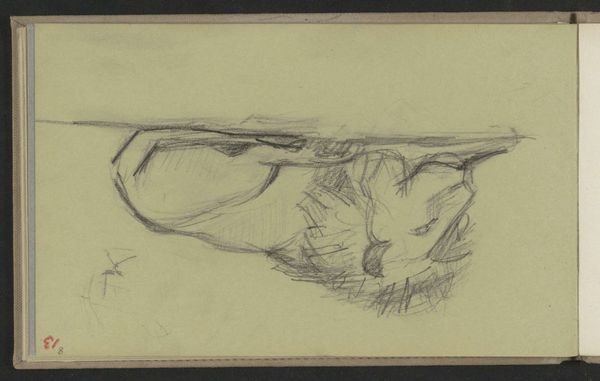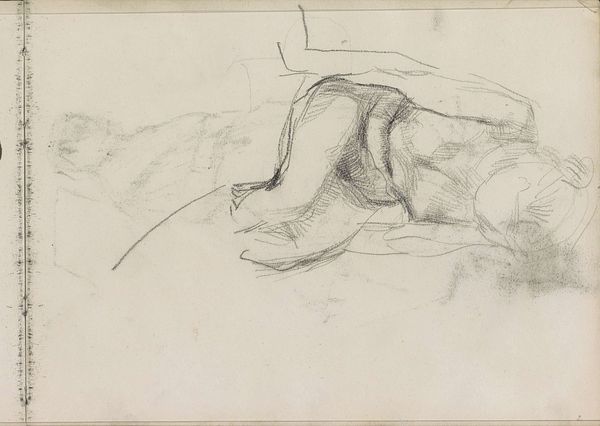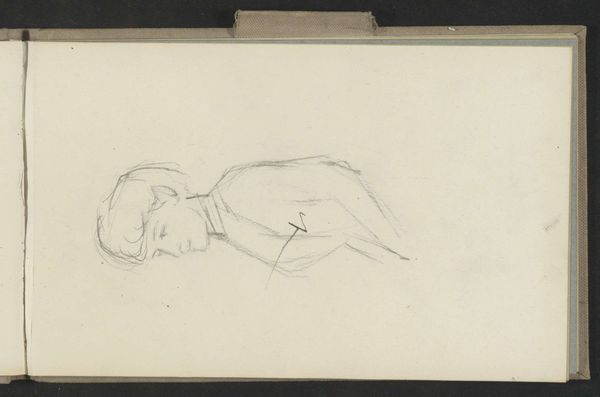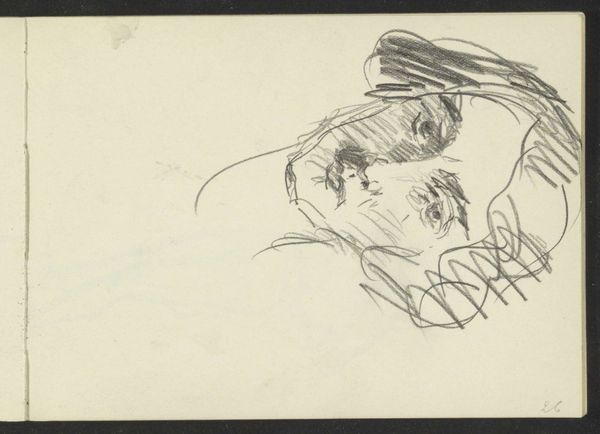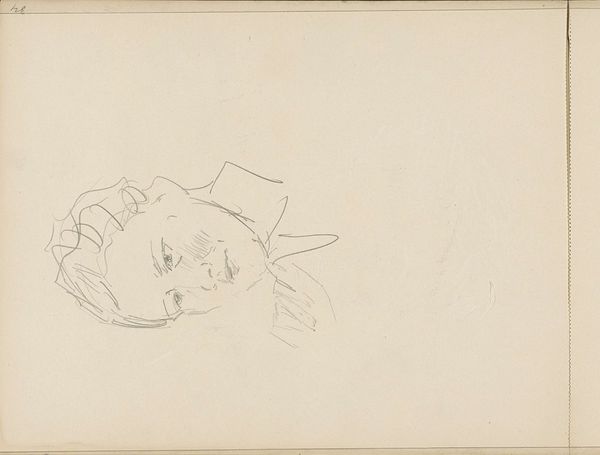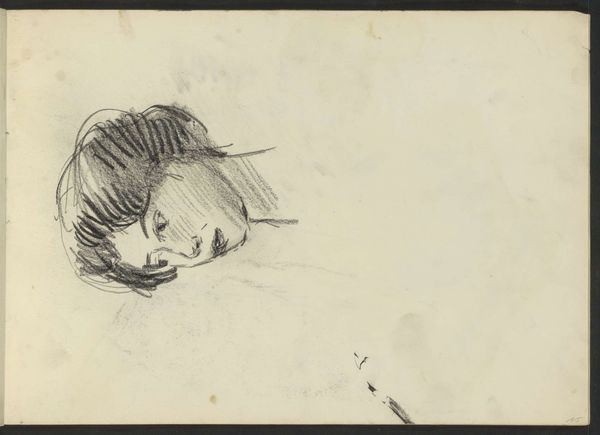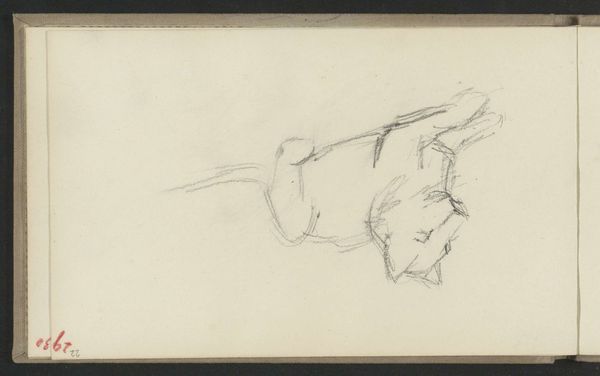
Copyright: Rijks Museum: Open Domain
Editor: This is *Vrouwenhoofd*, or 'Head of a Woman,' a pencil and graphite drawing by Isaac Israels, dated sometime between 1875 and 1934. It's interesting how economical Israels' marks are here, but the overall feeling is somber, thoughtful even. What elements of this work stand out to you? Curator: Immediately, the application of line strikes me. Observe how the density of the graphite defines form not through contour, but through mass and shadow. Israels masterfully employs hatching and cross-hatching to create a sense of volume. Editor: Yes, and the loose, almost scribbled lines give the work a sense of immediacy. Do you think this contributes to the mood? Curator: Precisely. Note that the lines aren't simply descriptive, they're expressive. Consider how the contrast between the tightly worked areas around the face and the almost ephemeral lines suggests the subject is perhaps caught between presence and absence. Where is the setting? The gaze? These contribute more that literal, physical depiction might allow. Editor: So the abstraction isn't a deficiency, but rather a choice that adds depth. It's a very considered choice. Curator: Indeed. By focusing on the interplay of line and tone, Israels transcends a mere representation of a head, offering instead a meditation on form itself, and inviting the viewer to participate in its construction. This, too, might give a sombre affect, by withholding narrative cues. Editor: I appreciate the insights regarding form and expression! I had focused too much on mood rather than examining the compositional components. Curator: And I was, perhaps, too severe. Your feeling-based starting point allowed me a foundation for more concrete observation.
Comments
No comments
Be the first to comment and join the conversation on the ultimate creative platform.

